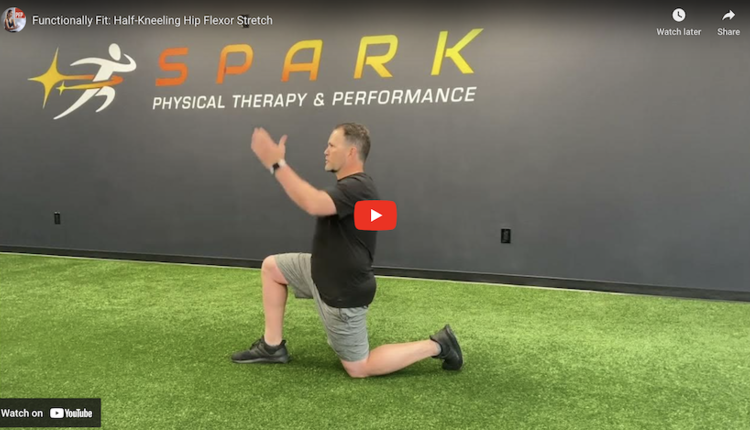
How much better would your business be right now if you only lost half of the clients you lost over the past year? If you are like most, I’m sure you are thinking to yourself, “Damn, that would be a game changer for me.” You would be right to think that! It is vital to this type of business to not only make sure we are bringing new people in, but to ensure we are keeping them longer in order to have an impact on them and to actually see the profit come in.
Given my role and what I do, I talk with a lot of different gym owners and people in the industry. There is a common thread between the ones that consistently keep their clients for 5, 10, 15 or 20 plus years! It all starts from the very beginning and having that first conversation.
One of the worst things you can do is look at your sales conversations as just sales conversations. Rather than seeing them for what they really are — opportunities to build relationships. I don’t know about you, but I don’t know any strong relationship in my life that was ever built from a script. If you are still using a script it’s ok, this article will help you. But, you have to move away from that if you really want to connect with people. At the end of the day, this is a relationship-focused business, so if you are coming across as robotic or insincere that isn’t going to make the person on the other side feel truly connected to the solution being provided.
So, what is the better approach to building stronger buy-in?
Great question! Instead of a script that is impersonal it is more about having a framework to the conversation. Having the right framework keeps it authentic while purpose-driven. You are guiding the conversation in a way that allows them to build more trust with you, and for you to bring out the right information needed to truly serve them.
It isn’t just about getting the yes. It’s about getting the yes with the deeper understanding of who this person is, why they are here and how you can best serve them. That is what sets the stage for the relationship, and that level of insight is how you keep them bought into the solution moving forward.
The sales process doesn't end when they sign up. You are selling them every day moving forward and when you have the right insight you can do that effectively.
With that being said, let's walk through an effective 5-Step Sales Framework.
This 5-Step Sales Framework allows you to actually be with the person in front of you and create a connection with them. Once you get used to it, it becomes really simple and flexible to use. The framework is based in behavior change science and designed around the same principles that are used in coaching fitness clients:
- Understanding the client and their situation
- Understanding where the client is trying to go
- Helping them discover their motivations and options
- Empowering them to change the situation
Step 1: Welcome and Build Rapport
In the first step of the Framework it's important to remember why you got into fitness. It was probably your passion for fitness itself at first, but then it was most likely because you wanted to change peoples’ lives. So get out of business owner mode and back into that passion for helping people. Get to know your prospect. Listen. And share about yourself and your journey without shifting the focus off of them. Then be upfront about what is going to happen in the conversation.
Step 2: Explore Aspirations
This second step is so important because it becomes an anchor for the whole conversation. You want to encourage your prospect to dream about their ideal future. Let them talk about where they want to be in three months. Prod them. Push them. People need a little push in this stage because they are often thinking that things are going to stay the same. They may also have a judgement about their dream, or think that their fitness goal is outrageous. It is a vulnerable space.
Step 3: Uncover Afflictions
As you dive into their dreams you will start to uncover what is stopping them from reaching their dream. Right? Because if there wasn’t an obstacle in their way then they wouldn’t be sitting with you. This step, goes into the dark spaces, the even more vulnerable space that people definitely don’t want to talk about. But all you need to do is ask. Over and over. You find every obstacle that is stopping them from reaching their fitness goals. This process is super valuable to the prospect. I’m sure they don’t often think about what is stopping them from reaching their goals. If they left the conversation after this step, you will have already helped them tremendously.
Step 4: Collaborative Evaluation
During this stage the two of you will evaluate the pros and cons of the prospect taking action — and of not taking action. Go in depth and take this stage seriously. Lead the conversation and keep it connected to pros and cons specifically for them. This is where you are able to leverage what you learned about the prospect in the “Explore Aspirations” and “Uncover Afflictions” stages. Let them discover the impact of their choices. You are guiding the conversation so that they can sell themselves on your packages. This is much better than trying to convince them that they need to change, let them prove to themselves that they need to change. This leads to the final stage in the process.
Step 5: Recommendations and Commitment
If you have done the prior four stages then this is going to be really easy. Be confident in your ability to help this person make the changes they need in their life. Make your offers with confidence and clarity. Bring back the last three stages. Remind them about the aspirations that they shared with you, then remind them of the afflictions stopping them from reaching their aspirations, then make your offer. Talk about your offer as a solution to their specific problem. You can strengthen the offer with social proof. Tell a story about a client that had a similar problem and how your offer helped them reach their goal.
At this point, the prospect should be pretty excited because they are living in their new future. Now, you can offer the commitment question. “Based on what we’ve talked about, what do you see as the next step?” Framing the question like this gives them the freedom to choose and puts their fate in their hands. All the work you have done in this process has helped them see that what you have to offer is the solution to their problem. This reinforces the themes we’ve followed all along:
- You’re genuinely helping them.
- They truly can make the necessary changes.
- It’s their decision to make — no pressure.
Now you can see how this one conversation done the right way will have a profound impact on how long that client stays with you.
This biggest takeaway from this is the power of a perspective shift. Going from thinking that getting a YES is the end goal to looking at it as just the beginning. Hopefully this provided the clarity you need to kick the “scripts” to the curb!

















